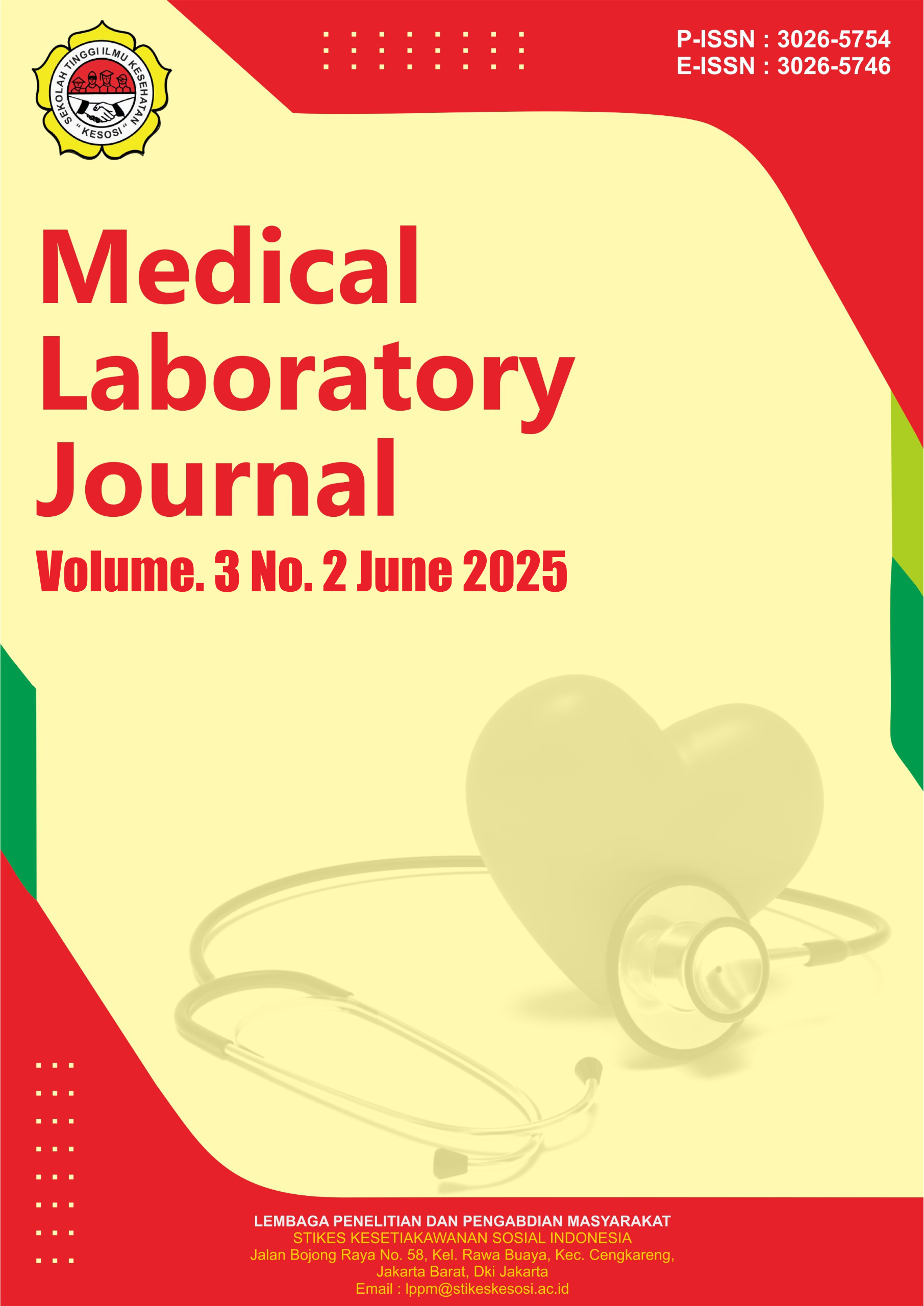Faktor-Faktor Yang Berhubungan dengan Kejadian Baby Blues Syndrome Pada Ibu Postpartum di Wilayah Kerja Puskesmas Teling Manado
DOI:
https://doi.org/10.57213/caloryjournal.v3i2.661Keywords:
Age, Baby blues syndrome, Parity, Postpartum MotherAbstract
Baby blues syndrome is a common condition experienced by mothers after childbirth and can negatively impact both the mother and her baby. Several contributing factors include lack of mental preparedness due to young maternal age and limited parenting experience, as well as the number of children a mother has. This study aimed to identify the factors associated with the occurrence of baby blues syndrome at the Teling Community Health Center in Manado. This was an observational analytic study using a cross-sectional design. The sampling technique applied was simple random sampling with a total of 59 respondents. Data collection was conducted using the Edinburgh Postpartum Depression Scale (EPDS) questionnaire. Data were analyzed using the SPSS program and the Chi-Square test at a significance level of α = 0.05. The results revealed a significant relationship between maternal age and the occurrence of baby blues syndrome (P-value = 0.000 < α 0.05), as well as between parity and baby blues syndrome (P-value = 0.008 < α 0.05). In conclusion, maternal age and parity are significantly correlated with the occurrence of baby blues syndrome at the Teling Health Center. It is recommended that nurses, as healthcare providers, address not only the physical needs of postpartum mothers but also their psychological well-being. Early identification of emotional disturbances and collaboration with other healthcare professionals in providing counseling and promoting bonding between mother and baby during the postpartum period are essential to ensure optimal maternal mental health and healthy infant development
References
Almida, E. N., Dahlia, Y., Ronanarasafa, & Shammakh, A. A. (2023). Hubungan usia dan paritas terhadap kejadian baby blues syndrome pada ibu postpartum di Kecamatan Sambelia, Lombok Timur. Nusantara Hasana Journal, 2(11), 30–36. https://doi.org/10.59003/nhj.v2i11.821
Aprilianti, C., Prabasari, S. N., Suganda, Y., Kuntoadi, G. B., Prasetyowati, T. A., Solama, W., Kartikasari, M. N. D., Winarni, Fitriani, A. L., Noya, F., & Sari, D. (2023). Penyulit dan komplikasi masa nifas. Get Press Indonesia.
Ariesca, R., Helina, S., & Vitriani, O. (2018). Faktor-faktor yang berhubungan dengan kejadian postpartum blues di Klinik Pratama Wilayah Kerja Puskesmas Payung Sekaki Kota Pekanbaru. Jurnal Proteksi Kesehatan, 8(1), 15–23. https://doi.org/10.36929/jpk.v7i1.125
Aryani, R., Afriana, & Faranita. (2022). Faktor-faktor yang berhubungan dengan baby blues syndrome pada ibu post partum di RSUD dr. Zainoel Abidin Kota Banda Aceh. Journal of Healthcare Technology and Medicine, 8(2), 1325–1336. https://doi.org/10.33143/jhtm.v8i2.2401
Badan Kependudukan dan Keluarga Berencana Nasional. (2017). Usia perkawinan. https://www.bkkbn.go.id/detailpost
Efi, F., Nainggolan, A. W., Purba, E. M., & Manurung, H. R. (2024). Faktor-faktor yang mempengaruhi terjadinya baby blues pada ibu postpartum di Puskesmas Idi Rayeuk Kabupaten Aceh Timur tahun 2023. Jurnal Ilmiah Multi Disiplin (JIMU), 2(3), 757–765. https://doi.org/10.70294/jimu.v2i03.456
Karjatin, A. (2016). Modul bahan ajar cetak, keperawatan maternitas. Kementerian Kesehatan Republik Indonesia.
Kumalasari, I., & Hendawati. (2019). Faktor risiko kejadian postpartum blues di Kota Palembang. Jurnal Kesehatan Poltekkes Palembang, 14(2). https://jurnal.poltekkespalembang.ac.id/index.php/JPP/article/view/408
Kurniawaty, M. (2019). Post partum depresion pada ibu ditinjau dari cara melahirkan dan faktor demografi [Skripsi, Universitas Negeri Semarang]. http://lib.unnes.ac.id/33627/
Mardhatillah, D., Gandini, A. L. A., & Ratnawati. (2019). Faktor-faktor yang berhubungan dengan kejadian postpartum blues di Wilayah Kerja Puskesmas Temindung Tahun 2019. https://repository.poltekkes-kaltim.ac.id/229/1/
Massa, K., Ratiyun, R. S., Sari, N. A. M. E., Yanti, N. L. G. P., Budiarti, A., Aniarti, R. P., Juwita, R., Suryati, Suryanigsih, M., Astuti, Y., Wulandari, M. R. S., Qurrotu Anini, Farida, & Ulfa, M. (2023). Buku ajar keperawatan maternitas. PT. Sonpedia Publishing Indonesia. https://books.google.co.id/books/about/BUKU_AJAR_KEPERAWATAN_MATERNITAS.html?id=MHLVEAAAQBAJ&redir_esc=y
Nasir, A., Muhith, A., & Ideputri, M. E. (2011). Buku ajar metodologi penelitian kesehatan. Nuha Medika.
Notoatmodjo, S. (2018). Metodologi penelitian kesehatan. Rineka Cipta.
Permatasari, N. R., Hawaidah, & Madya, F. (2024). Faktor yang mempengaruhi kejadian baby blues syndrome. Prepotif: Jurnal Kesehatan, 8(1), 244–253. https://doi.org/10.31004/prepotif.v8i1.25215
Pratiwi, K., & Rusinani, D. (2020). Buku ajar psikologi perkembangan dalam siklus hidup wanita. Deepublish Publisher. https://www.google.co.id/books/edition/Buku_Ajar_Psikologi_Perkembangan_Dalam_S/zZoCEAAAQBAJ
Saraswati, D. E. (2018). Faktor yang berpengaruh terhadap kejadian postpartum blues di desa Campurejo dan Sukorejo Kecamatan Bojonegoro. Journal of Health Science, 11(2), 130–139. https://journal2.unusa.ac.id/index.php/JHS/article/view/105
Sari, R. P., Densy, A., & Keraman, B. (2020). Analisis faktor risiko kejadian postpartum blues di Puskesmas Perumnas Kabupaten Rejang Lebong. Journal of Midwifery, 8(1), April, 1–7. https://jurnal.unived.ac.id/index.php/JM/article/view/1031
Susila, & Suyanto. (2015). Metodologi penelitian cross sectional. BOSS SCRIPT.
Ulfa, P., Agustina, & Mainidar. (2024). Analisis faktor yang mempengaruhi terjadinya baby blues syndrome pada ibu nifas di Wilayah Kerja Puskesmas Darul Imarah. Jurnal Protif Preventif, 7(4), 806–813. https://doi.org/10.47650/jpp.v7i4.1412
Wakhidah, N. (2024). Faktor yang mempengaruhi postpartum blues di RS PKU Muhammadiyah Patanahan [Skripsi, Universitas Muhammadiyah Gombong]. https://repository.unimugo.ac.id/3206/
Widjaja, I. P. (2014). Postpartum blues. SMF Obstetri dan Ginekologi, Universitas Udayana.
Wulan, N., Mawati, I. P., & Sutandi, A. (2023). Analisis faktor yang berhubungan dengan kejadian baby blues syndrome pada ibu postpartum. Journal of Nursing Practice and Education, 4(1), 194–201. https://doi.org/10.34305/jnpe.v4i1.952
Yuhaeni, N., & Indawati, E. (2024). Analisis faktor yang berhu bungan dengan kejadian baby blues syndrome pada ibu nifas di Klinik Cempaka Medical Centre Tambun Bekasi tahun 2023. Malahayaty Nursing Journal, 6(4), 1351–1372. https://doi.org/10.33024/mnj.v6i4.11139
Downloads
Published
Issue
Section
License
Copyright (c) 2025 Medical Laboratory Journal

This work is licensed under a Creative Commons Attribution-ShareAlike 4.0 International License.






